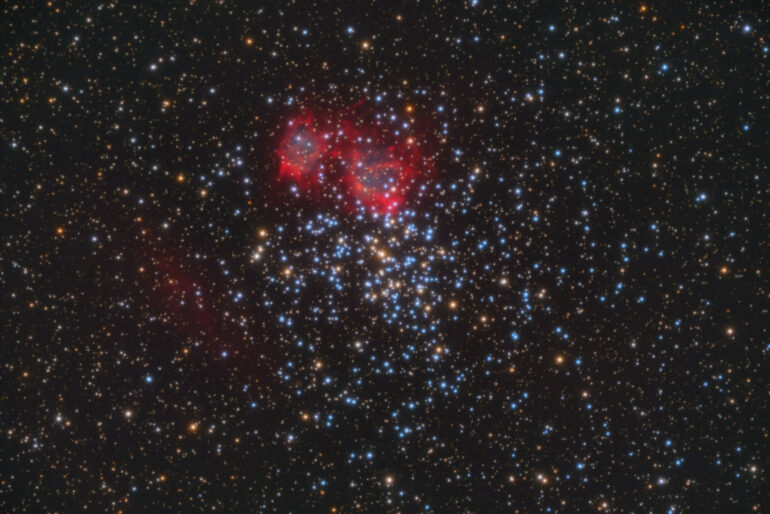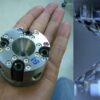Stars like our sun end their lives as white dwarfs. Some of them are surrounded by a planetary nebula consisting of gas ejected by the dying star shortly before its death. An international research team led by Professor Klaus Werner of the Institute of Astronomy and Astrophysics at the University of Tübingen has for the first time studied a central star of a planetary nebula located in an open star cluster.
The researchers were able to precisely determine the mass that the central star lost during its lifetime. The results are published in the journal Astronomy & Astrophysics.
There are more than a thousand open star clusters in the Milky Way. Each of them comprises a collection of up to several thousand stars that have formed simultaneously from a dense cloud of gas and dust. “The stars in a cluster are all the same age; that has a special significance for astrophysics,” Klaus Werner reports. They differ only in mass. “The more massive a star is, the faster it consumes its nuclear fuel by fusing hydrogen into helium. So its life is shorter and it evolves into a white dwarf faster,” he explains.
Snapshot of celestial development
The observation of a star cluster shows, like a snapshot, the development of stars of different masses at the same age, Werner says. “In astronomy, star clusters can be used as a kind of laboratory where we can measure how reliable our theories of stellar evolution are,” he says. One of the biggest uncertainties in the theory of stellar evolution is how much matter a star loses during its lifetime, he says, adding that such mass loss is substantial.
“Stars like our sun lose just under half their mass by the time they have evolved into white dwarfs. Stars with eight times the mass of the sun lose about 80% of their mass,” says the astrophysicist. The relationship between the stars’ birth mass and the mass at the time of death as a white dwarf is known in astronomy as the initial-final mass relation.
The mass of white dwarfs in star clusters can be directly related to the mass they had at birth, Werner says. “The data from very young white dwarfs are particularly valuable, as these are the central stars of planetary nebulae,” he explains. So far, only three star clusters are known to contain a planetary nebula. “None of their central stars had been studied before because they are all very distant and faint,” Werner says.
Special chemical composition
The research team pointed one of the world’s largest telescopes, the ten-meter GRANTECAN tele-scope on the Canary Island of La Palma, at the central star in the Messier 37 star cluster and analyzed its spectrum. The mass was determined to be 0.85 solar masses, putting the original mass at 2.8 solar masses.
“So the star has lost 70% of its matter during its lifetime,” Werner explains. Another peculiarity, he says, is its special chemical composition. The star no longer had hydrogen on its surface; Werner says this indicates an unusual event in its recent past—a brief flare-up of nuclear fusion.
Being able to make a precise determination of the initial-final mass relation is of fundamental importance in astrophysics, says Werner. It determines whether a star evolves into a white dwarf, becomes a neutron star in a supernova explosion, or even whether a black hole remains as the final stage. And yet, Werner points out, “new generations of stars are formed from the ejected matter, enriched in heavy elements as products of nuclear reactions. This is what the chemical evolution of galaxies—and ultimately the entire universe—depends upon.”
More information:
Klaus Werner et al, The unusual planetary nebula nucleus in the Galactic open cluster M37 and six further hot white dwarf candidates, Astronomy & Astrophysics (2023). DOI: 10.1051/0004-6361/202347217
Provided by
Universitaet Tübingen
Citation:
Central star in a planetary nebula reveals details of its life (2023, October 11)



